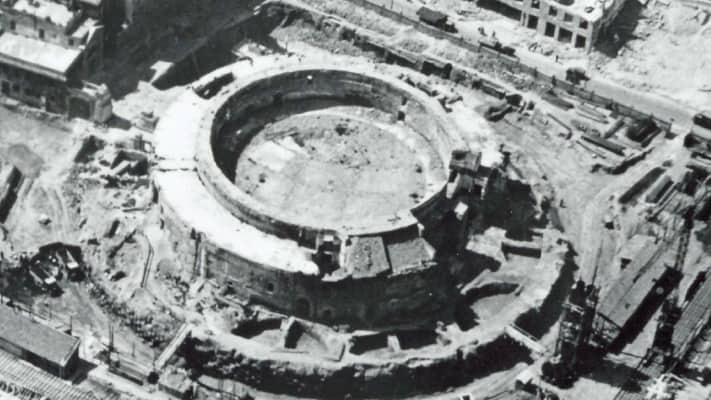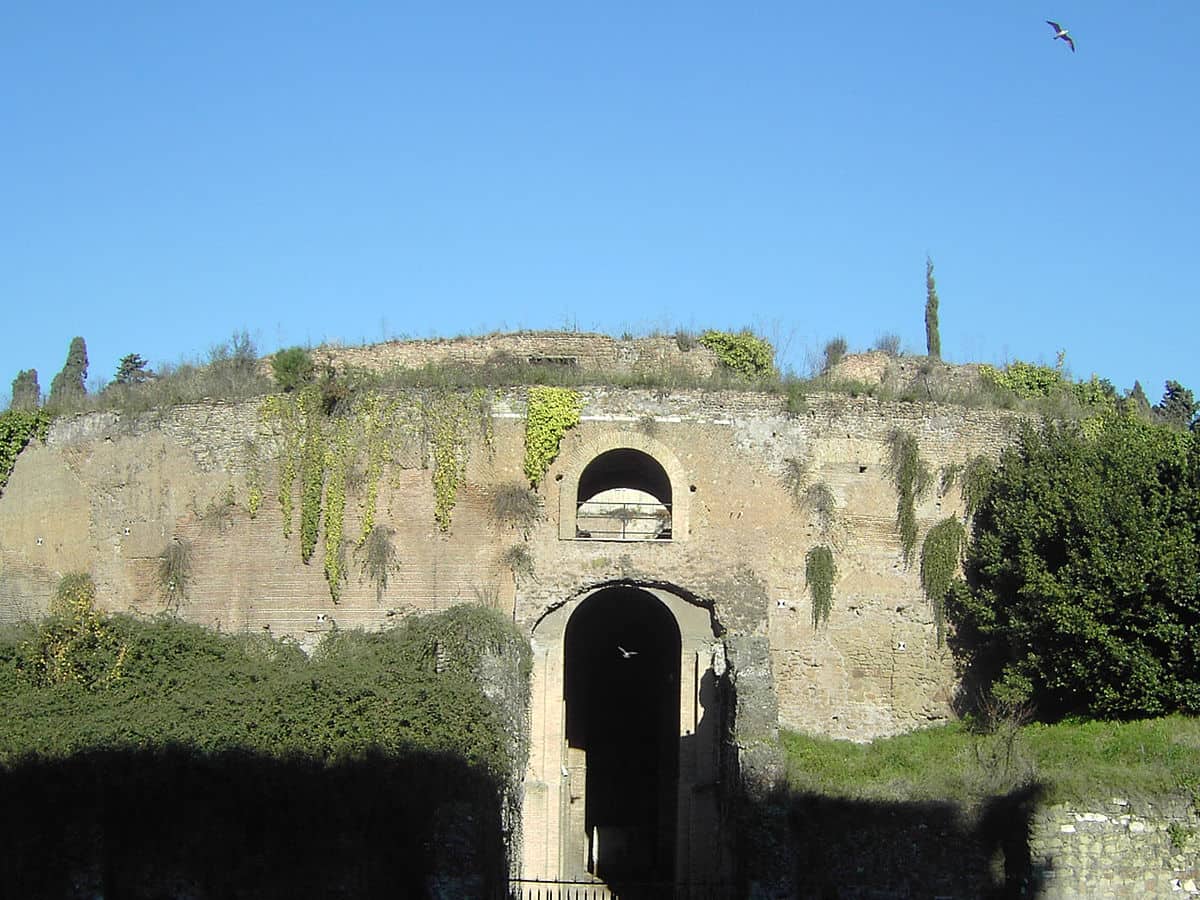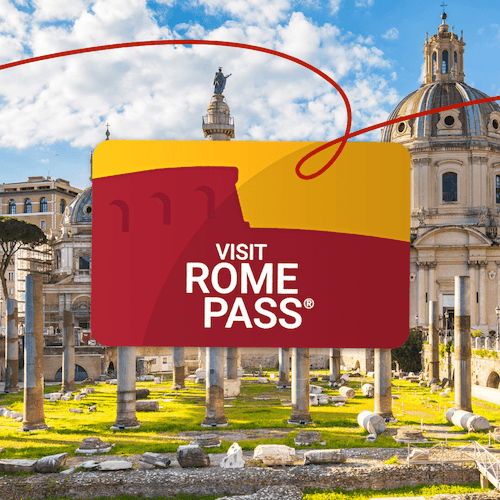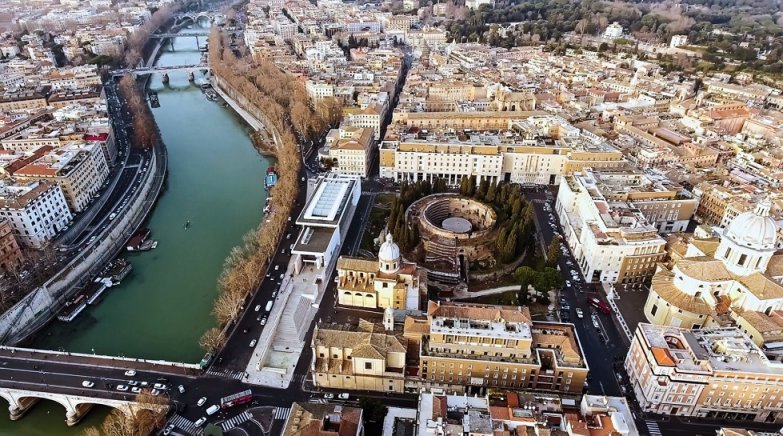«The most noteworthy is what is called the Mausoleum, a great mound near the river (the Tiber) on a lofty foundation of white marble, thickly covered with ever-green trees to the very summit. Now on top is a bronze image of Augustus Caesar; beneath the mound are the tombs of himself and his kinsmen and intimates; behind the mound is a large sacred precinct with wonderful promenades; and in the centre of the Campus is the wall (this too of white marble) round his crematorium; the wall is surrounded by a circular iron fence and the space within the wall is planted with black poplars.»
A project resulting from the synergy between the Superintendency of Rome and Fondazione Tim

Following a chief recovery and restoration project strongly supported by the Superintendency of Rome, began in 2017, and thanks to the support of Fondazione TIM, the Mausoleum of Augustus has finally reopen to the public after 14 years, as of 2nd March 2021.
This major museum project, which also included the rearrangement of the Piazza Augusto Imperatore in front of the Mausoleum, awaited for many years, will restore to its original splendour a symbol of the transition from the Republican to the Imperial age, the largest circular funerary monument of the ancient world.
Augustus' Empire and the splendour of the Pax Augusti
🥇 Visit Italy’s brand partnership

Augustan era was a period of great peace and prosperity for Rome and the Empire, so much so that in 29 BC he proclaimed the so-called Pax Romana or Pax Augusti (Roman Peace or Augustan Peace) , imposing peace on the states within the Empire, which lasted for almost two centuries. Thanks to the absence of wars, Augustus devoted himself to defending the traditions of the Roman people, protecting the cults of the religion of the Fathers, but above all he gave an enormous boost to culture, encouraging the proliferation of literary circles. The most famous of these was that of Caius Cilnius Maecenas, who was entrusted with the task of gracing the literary and poetical circles of the time, including Virgil, Horace and Ovid. It was from Maecenas, Augustus' advisor, that the noun patron (in Italian "mecenate") became the term for a protector and benefactor of poets and artists.
The Emperor was particularly engaged in activities aimed at improving the area of Campo Marzio building the Theatre of Marcellus, the Baths of Agrippa, the Pantheon, the Saepta, the Ara Pacis and, of course, his Mausoleum.
Also known as Augusteo, the funerary monument stands in the square bearing the same name (Piazza Augusto Imperatore) in Campo Marzio district.
Apart from Augustus himself, or rather Gaius Julius Caesar Augustus, better known as Octavian Augustus, several members of the Julio-Claudian dynasty were buried in the Mausoleum.
Its construction was started in 28 BC by Augustus, the first Roman emperor from 27 BC. on his return from Alexandria after the conquest of Ptolemaic Egypt. It was during his visit to Alexandria that he approached with Alexander the Great's Hellenistic-style tomb. However, he probably found another inspiration in the magnificent Mausoleum at Halicarnassus, dedicated to Mausolus, the satrap of Caria and dating back to 350 BC.
The structure of Mausoleum

As mentioned above,the Mausoleum has a circular plan with a diameter of 87 metres and is the largest circular funerary monument in the world. It is a rather complex structure with superposed levels, consisting of a 12-metre-high travertine base (no longer visible) decorated with a Doric frieze on which rests the circular building of five concentric rings, connected by radial walls. The two granite obelisks, brought directly from Egypt and initially placed at the entrance, were removed and relocated to Piazza del Quirinale and Piazza dell'Esquilino, where they still stand today. Two further wall lines formed a second series of concamerations.
In front of the entrance, there were the two pillars bearing the bronze tablets on which the Res gestae divi Augusti (the Emperor's deed) were engraved.
A long corridor led to a radial wall with two lateral passages leading to the burial chamber itself. The circular cell had three rectangular niches on its sides, where the tombs of the emperor's family were placed. A majestic cylindrical pillar, containing a square room (probably the site of Augustus' tomb), stood in the centre of the cell. Finally, on the top of this pillar, in an external position, there was the Augustus' bronze statue. Like its eastern and Etruscan counterparts, the tomb was covered with earth and evergreen trees on its top. The whole complex was surrounded by cypresses and hedges.
The Mausoleum throughout history
Augustus' nephew, Marcus Claudius Marcellus (died in 23 BC) was the first to be buried here, together with Augustus' mother, Atia Balba. Later, several members of the family were buried in the mausoleum together with other prominent personalities: from Octavian's general and friend Marcus Vipsanius Agrippa, to Drusus the Elder, Lucius and Gaius Caesar. In 14 AD Augustus himself was buried here and then Drusus Julius Caesar, Germanicus, Livia and Tiberius. It seems that Caligula laid the ashes of his mother Agrippina and his brothers Nero Caesar and Drusus Caesar here. Later, the mortal remains of another sister of him, Julia Livilla and Caligula himself were also transported here. The Emperor Nerva was the last to be buried in the mausoleum, around 98 AD.
As usual during the centuries, in the Middle Ages the complex was abandoned and neglected, suffering numerous looting, damage and devastation. The statue of Augustus was removed and melted down in order to obtain coins.
It has undergone numerous reinterpretations and different uses: from being a funerary monument, it went from being a fortification in the Middle Ages under the Colonna family to an Italian garden during the Renaissance under the Soderini family. It even became a theatre where tournaments, fireworks shows and plays were held by Marquis Benedetto Correa in the 18th century. At the time of the Grand Tour, bullfights were held here in full Spanish style with bulls and buffaloes, until Pope Pius VIII banned such practices in 1829.
Many buildings and structures had been erected next to the complex, but in the 1930s Benito Mussolini decided to demolish them, returning the Augusteum its original look and celebrating the glory of Augustus.
Today, in the heart of the city centre, the Mausoleum, although surrounded by neverending architectural wonders of every age, does not go unnoticed in its respectable location.
Important information to visit the Mausoleum
To visit the mausoleum, you are requested to booking directly from the website www.mausoleodiaugusto.it, from Monday to Friday from 9:00 a.m. to 4:00 p.m. (with last admission allowed at 3:00 p.m.) in compliance with the provisions of the current Prime Minister's Decree, establishing the closing of cultural sites at weekends. Entrances are limited to a maximum of 10 people per hour. From 22nd April: 9:00 a.m.-7:00 p.m., with last admission at 5.30pm.
The start of the museum tour will allow access to the public who will be able to visit the main building and the museum spaces in complete safety, despite the ongoing construction work.
Moreover, from April 2021, the visit to the Mausoleum will also offer digital contents, in virtual and enhanced reality, thanks to multimedia technologies. The aim is therefore to seal the collaboration between public and private, the enhancement, protection and projection into the future of the glory of the city of Rome and its immense historical, artistic and architectural heritage.
The visits, totally free for all until 21st April 2021 (day also known as the Birth of Rome), will last about 50 minutes. From 22nd April, and during all 2021, access will be free for all Rome citizens. Later, non-residents will have to pay a fee, according to the fairs for the year 2021.
For further information and group booking, when in Rome, please contact the paying number 060608 (a tourist call centre available all days, from 9:00 a.m. to 7:00 p.m., in 6 Languages: Italian, English, French, Spanish, German and Japanese ) or visit the web sites www.060608.it (available in Italian and English) and www.sovraintendenzaroma.it.
We warmly recommend you to visit the official websites as opening times and days may change due to Covid-19 emergency.
About the author
Written on 12/03/2021




Alessandra Festa
Finally, after 14 years, the Mausoleum of Augustus has been reopened, following a long requalification and restoration project commissioned by the Superintendency of Rome in collaboration with and with the contribution of Fondazione Tim.